Love your locks
Keeping your hair healthy is a breeze if you know the mistakes and everyday habits that could wreck your hair. You can easily avoid these pitfalls and the worst hair mistakes with the following tips and tricks from hair pros.
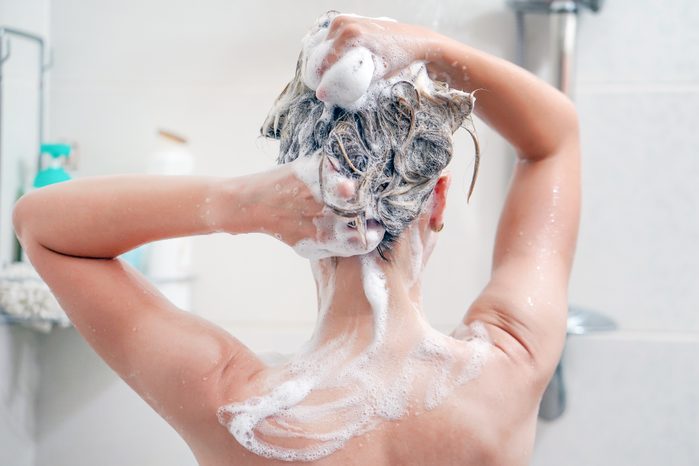
Washing your hair too often—or not enough
OK, you got the memo: Cleansing your hair more than you need to can strip away the natural oils that keep it healthy, thus making it more brittle and prone to breaking. And while the trend of washing less and less often is catching on, experts warn to tread lightly. “The pores on your scalp can become congested from excessive oil, which will attract even more dirt and debris,” says Lauren E. Hack, hairstylist, and partner at Studio 522 in New York City. Your best bet: Reduce the number of times you shampoo to three to four times a week. “In between shampoos, soak up oil with a light coat of dry shampoo on your roots and use a boar bristle brush to distribute hair oils from root to tip for extra natural shine and conditioning,” suggests Nick Penna, owner and lead stylist at SalonCapri in Boston. (Here’s more on how often you should wash your hair according to your hair type.)
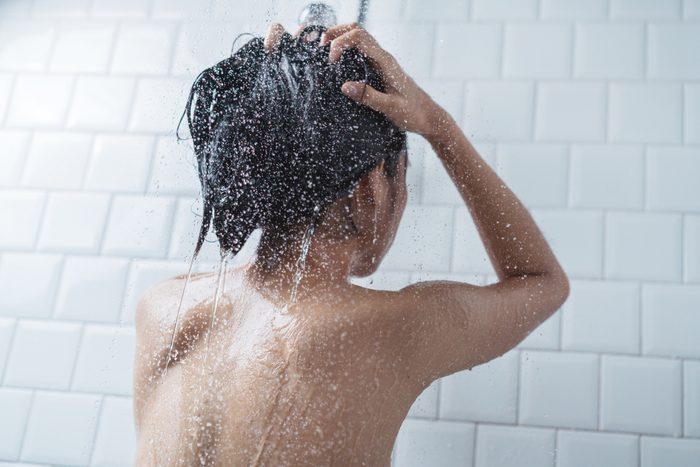
Rinsing with steaming hot water
That same hair damage caused by flat irons and hair dryers can also happen when you turn the temperature dial up too high in the shower. “Think if it’s too hot to touch, it’s too hot to put in your hair—in fact, it can be incredibly damaging,” warns Jenna Mast, a New York-based hairstylist. “It’s fine to use hot—not steaming—water to rinse out your shampoo. This allows your hair cuticles to open up and ensures your strands are clean from the inside out.” But once you condition, rinse with cold water to seal the cuticle closed. This adds a healthy shine that will last until your next wash. Here are more tips on how to properly wash your hair.
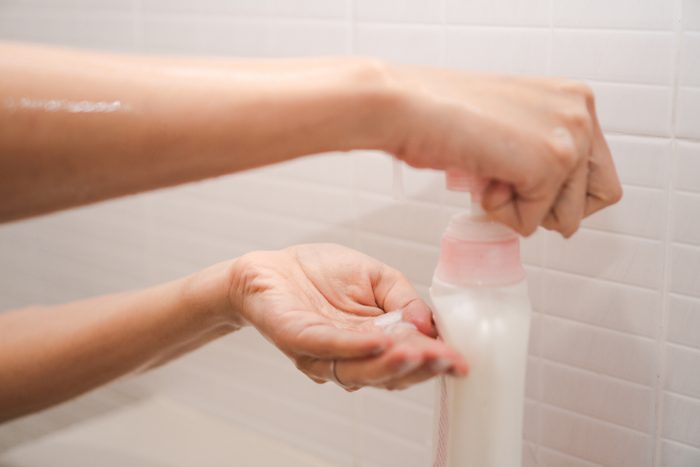
Not using a color-safe shampoo
If you color your hair—even just a few times a year—using a color-safe shampoo is a must. “Without it, your color will fade very fast and your hair can become dry,” says Hack. Her favorite: Pureology Hydrate. “It gently cleanses without stripping color and provides the proper moisturization colored hair needs.” If you’re a blonde, be careful when it comes to the purple shampoos that promise to brighten your color. This shampoo is not intended to be used every day or every time you wash your hair. “If you overuse purple shampoo, your hair may start to look dull and even begin to have a grey or purple tint—and not the pretty pastel kind either,” says Hack. “If you feel your hair is starting to look brassy, try Schwarzkopf Bonacure Color Save Silver Shampoo—it reduces unwanted warm tones and brings back that cool color you intended for.”
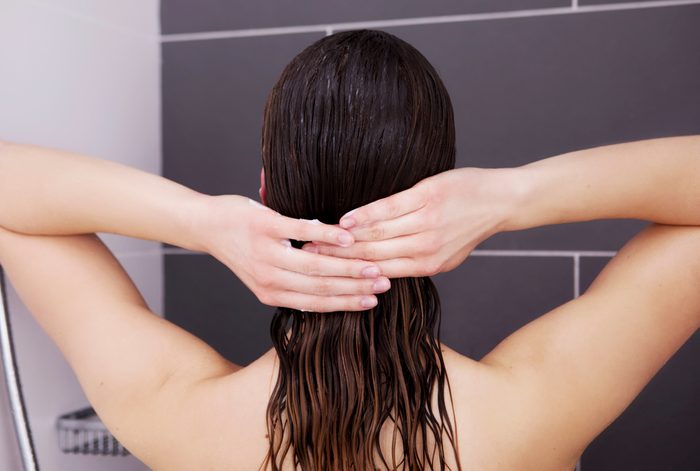
Conditioning from your roots
When applying conditioner, it’s best to start at the midshaft of your hair toward the ends. “The ends of the hair are the oldest, meaning they’ve been on your head the longest, contain the least amount of moisture, and are the most dead, so this is the area that needs the most conditioning, ” says Mast. Using the right amount is also key. “How much you need really depends on the length, thickness, and texture of your hair, so be sure to ask your stylist the correct amount you should be using,” says Penna.
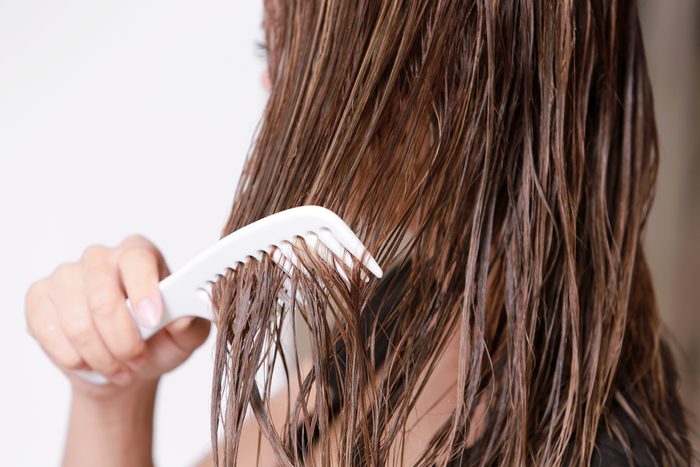
Brushing just-out-of-the-shower wet hair
Wet hair is not only heavier, but more elastic and delicate, so stretching it out with your brush will cause the strands to break. Instead, brush your hair before you hop in the shower—especially if you have product in it (hair spray, texturizer, sea salt spray, etc.). “Giving your hair a nice detangle before you get it wet is the key to avoiding detangling afterward,” says Mast. Once you’re out, use a brush created specifically for detangling gentle, wet hair, like the Wet Brush. “These are a lot gentler on the hair and specifically made to not break, pull, or damage your hair whether it’s wet or dry.”
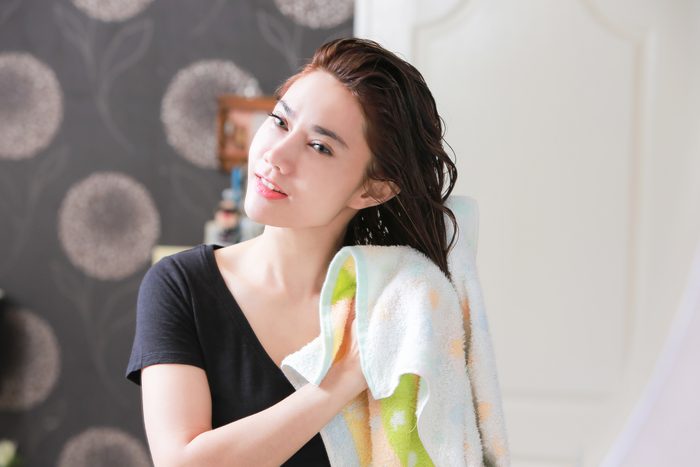
Rough-drying your hair with a bath towel
Most people are used to taking a towel to their whole body—hair included—immediately after hopping out of the shower. But that’s a major no-no, says Mast. “It doesn’t matter how low-maintenance you are—don’t stretch and pull that wet, delicate hair!” Instead of aggressively tousling it, twist it up in a nice, not-too-tight towel-turban. This you can do upside down, right-side up—whichever way you’re comfortable with. The idea is to get the moisture out of your hair. A microfiber hair towel will do that the quickest—although, you might want to consider letting your hair air-dry.
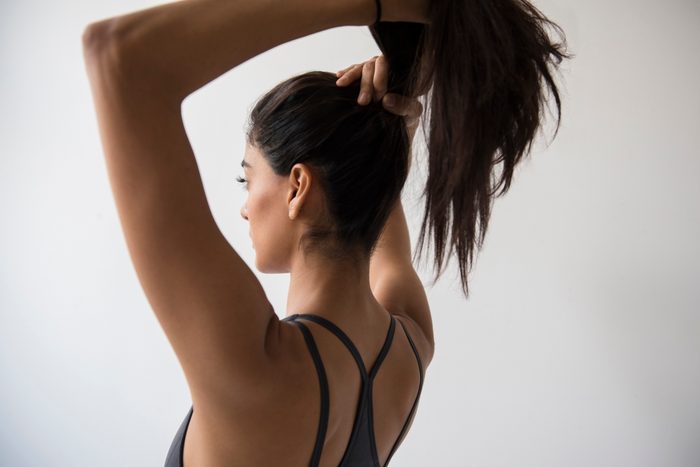
Putting wet hair in a ponytail
Always let your hair dry a bit before stretching it into a tight pony or bun. If you can’t wait, Mast suggests using a little serum or leave-in treatment into your tresses—she loves Oribe Lightweight Moisturizing Cream—concentrating on the mid-lengths and ends. “Then you can braid your hair into a loose braid and save your hair from over-stretching and snapping.” Pulling your hair back too soon after washing is one of the habits that ruin your hair.
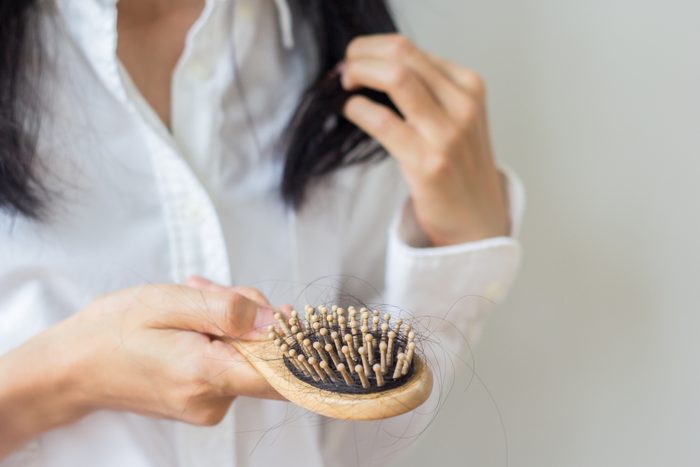
Styling with the wrong kind of hairbrush
There are different types of brushes out there for all different types of hair textures. Choosing the right one for your particular hair type is the best thing you can do to keep your strands healthy. “Natural boar bristle brushes are best for curly and straight hair,” says Vincent Sideli, hairstylist at the Yves Durif salon in New York City. “The boar bristle is gentle on the hair, smooth cuticles, moisturize hair, and create a beautiful, glossy finish.” Paddle brushes—like this one—are especially great for those with straight hair of all lengths and ideal for day-to-day brushing. “The rubber cushion on the paddle brush is designed to bend with your scalp and minimize damage from pulling or breaking.” Next time you have a hair appointment, ask your stylist to prescribe you the perfect brush. Trust us, you’ll notice the difference!
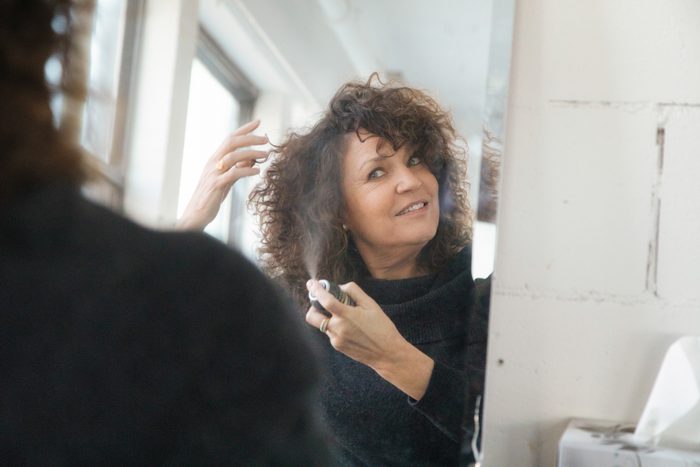
Overdoing the dry shampoo
There’s no denying that dry shampoo is one of the greatest beauty creations of all time. Just a few sprays greasy, oily unwashed hair instantly looks more voluminous, thick, and grease-free. But piling on too much of the stuff can do more harm than good. “Oil and dirt build-up naturally each day and need to be removed from the scalp and hair so your follicles remain clear and balanced,” says Sideli. Dry shampoos actually don’t remove any of these impurities—instead, they clog hair follicles, which leads to hair loss and loss of growth of the hair.” Try limiting your use to once a week—twice max. “On days when you’re not using dry shampoo, but need a quick root fix, massage your scalp with your fingertips to loosen and break up any buildup,” suggests Mast. “Then, take a paddle brush—preferably a bristle brush and brush your scalp from roots to end while distributing your scalp’s natural oils through your strands.” This will give your hair a healthy shine without the oily residue on top of your head.
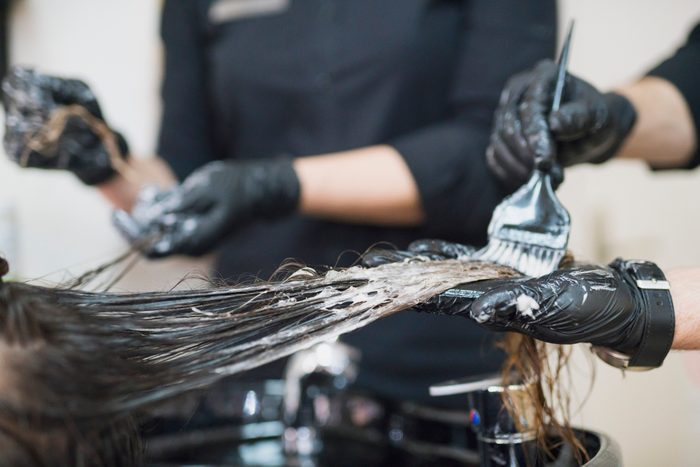
Coloring or highlighting too often
Listen up shade-shifters: It might be fun to constantly switch up your look, but coloring your hair is a chemical process that can wreak havoc on your strands. “Take breaks between your color ‘relationships,’” says Kim Vō, BlondMe global ambassador and celebrity colorist. “If at-home temporary hair color isn’t enough of a shade shift, hair extensions can do the trick of transforming your tresses, adding dimension without the color commitment.” If you’re covering up gray strands, learn the sneaky reasons you might be going gray prematurely.
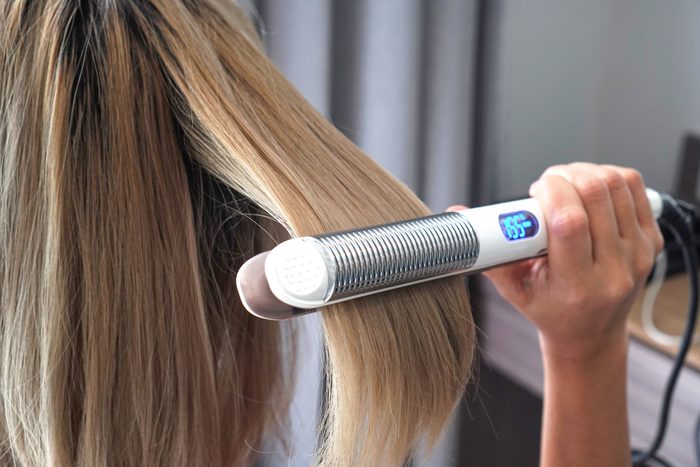
Skipping the heat-shield step before applying a hot tool
Think of a heat shield like a sunblock. You’d never lay in the sun without putting sunblock on first, right? “Heat shields don’t only help protect your hair from the damage caused by heat, but they also help your hair look smooth and shiny,” says Hack. “I love Oribe Balm d’Or because it makes your hair easier to manage and gets rid of any flyaways.” If you’re using a heat protector, make sure it’s fully absorbed into your hair before applying the hot tool, says Mast.
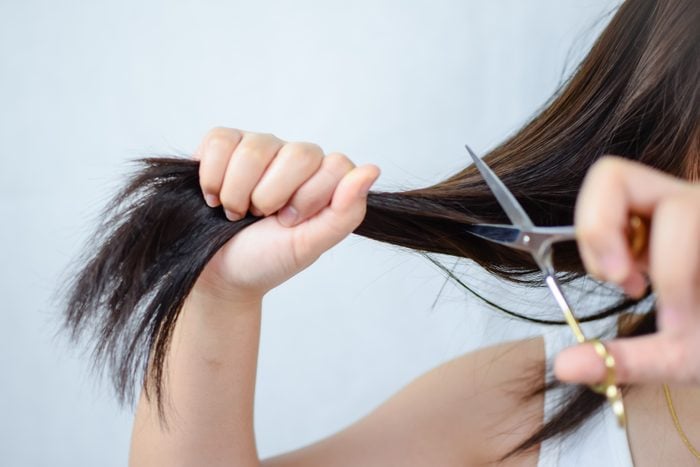
Cutting your own hair at home too often
Sometimes you have no choice (quarantine, for example), but this is one best left to the professionals. “A proper haircut requires a class in the principles of haircutting at the very least,” says Sheenon Olson, creative director of ATMA Beauty in Miami. “I’ve never seen this done successfully and would recommend people avoid it at all costs, otherwise even your stylist might not be able to fix it or achieve the style you were hoping for.” Also, frequent trims are essential if you want your hair to grow, says Hack. “The longer you go without cutting your hair, the higher the split ends grow, so if you want to grow your hair out, be sure to have your stylist give you a quick trim at least every three months.”
